
U.S. Route 66 or U.S. Highway 66 was one of the original highways in the United States Numbered Highway System. It was established on November 11, 1926, with road signs erected the following year. The highway, which became one of the most famous roads in the United States, ran from Chicago, Illinois, through Missouri, Kansas, Oklahoma, Texas, New Mexico, and Arizona before terminating in Santa Monica in Los Angeles County, California, covering a total of 2,448 miles (3,940 km).

Tulsa County is located in the U.S. state of Oklahoma. As of the 2020 census, the population was 669,279, making it the second-most populous county in the state, behind only Oklahoma County. Its county seat and largest city is Tulsa, the second-largest city in the state. Founded at statehood, in 1907, it was named after the previously established city of Tulsa. Before statehood, the area was part of both the Creek Nation and the Cooweescoowee District of Cherokee Nation in Indian Territory.

Muskogee is the 13th-largest city in Oklahoma and is the county seat of Muskogee County. Home to Bacone College, it lies approximately 48 miles (77 km) southeast of Tulsa. The population of the city was 36,878 as of the 2020 census, a 6.0% decrease from 39,223 in 2010.

Glenpool is a city in Tulsa County, Oklahoma, United States. It is part of the Tulsa Metropolitan Statistical Area (TMSA). As of 2020, the population was 14,040, which represented an increase of 29.9% since the 2010 census, which reported the total population as 10,808.

Jenks is a city in Tulsa County, Oklahoma, United States, and a suburb of Tulsa, in the northeastern part of the state. It is situated between the Arkansas River and U.S. Route 75. Jenks is one of the fastest-growing cities in Oklahoma. The city's population was 16,924 in the 2010 census, but by 2020, this had grown to 25,949. The Census estimated Jenks' population as 27,141 in 2022.

Tulsa is the second-most-populous city in the state of Oklahoma, after Oklahoma City, and is the 47th-most-populous city in the United States. The population was 413,066 as of the 2020 census. It is the principal municipality of the Tulsa metropolitan area, a region with 1,034,123 residents. The city serves as the county seat of Tulsa County, the most densely populated county in Oklahoma, with urban development extending into Osage, Rogers and Wagoner counties.

Interstate 244 (I-244), also known as the Martin Luther King Jr. Memorial Expressway since 1984, the Crosstown Expressway, and the Red Fork Expressway, is a 15.8-mile-long (25.4 km) east–west Interstate Highway bypass route of I-44 in Tulsa, Oklahoma.
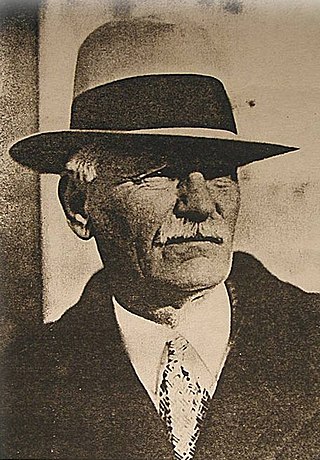
Charles Francis Colcord was a cattle rancher, U.S. Marshal, chief of police, businessman, and pioneer of the Old West. The community of Colcord, Oklahoma, is named for him.
West Tulsa is a local name given to an area situated in the west section of the city of Tulsa, Oklahoma which includes various communities to the west and south of the Arkansas River. As development between Sand Springs and Tulsa continued in the late 19th through the early 20th centuries, the name West Tulsa was used to refer to this area west of Tulsa and north of the Arkansas River, but many people in Tulsa and those knowing of the history of Tulsa do not include this area near Sand Springs when referring to West Tulsa.

Green Country, sometimes referred to as Northeast Oklahoma, is the northeastern portion of the U.S. state of Oklahoma, which lies west of the northern half of Arkansas, the southwestern corner the way of Missouri, and south of Kansas.
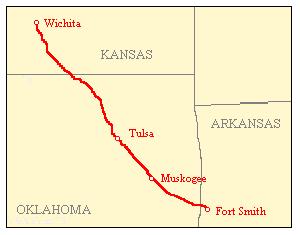
The Midland Valley Railroad (MV) was a railroad company incorporated on June 4, 1903 for the purpose of building a line from Hope, Arkansas, through Muskogee and Tulsa, Oklahoma to Wichita, Kansas. It was backed by C. Jared Ingersoll, a Philadelphia industrialist who owned coal mining properties in Indian Territory. The railroad took its name from Midland, Arkansas, a coal mining town in western Arkansas, which was served by the railroad. The Midland Valley gained access to Fort Smith, Arkansas via trackage rights over the Frisco from Rock Island, Oklahoma.
Tulsa is the second-largest city in the state of Oklahoma and 45th-most populous city in the United States.

The historic U.S. Route 66, sometimes known as the Will Rogers Highway after Oklahoma native Will Rogers, ran from west to northeast across the state of Oklahoma, along the path now taken by Interstate 40 (I-40) and State Highway 66 (SH-66). It passed through Oklahoma City, Tulsa, and many smaller communities. West of the Oklahoma City area, it has been largely replaced by I-40; the few independent portions that are still state-maintained are now I-40 Business. However, from Oklahoma City northeast to Kansas, the bypassing I-44 is mostly a toll road, and SH-66 remains as a free alternate.
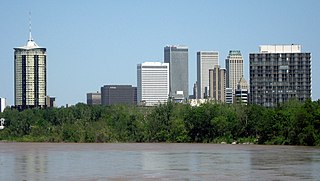
Tulsa is the second-largest city in the state of Oklahoma. It has many diverse neighborhoods due to its size.
Owen Park is a residential neighborhood and historic district in Tulsa, Oklahoma. Its borders are Edison Avenue on the north, the municipal Owen Park on the east, the Keystone Expressway on the south, and Zenith Avenue on the west. Opened on June 8, 1910, it was Tulsa's first municipal park. The district covers 163.48 acres (66.16 ha), while Owen Park itself covers 24 acres (9.7 ha) on the east side of the District.

The 11th Street Bridge was completed in December 1915 to carry vehicles across the Arkansas River at Tulsa, Oklahoma. Used from 1916 to 1972, it was also a part of U.S. Route 66. Functionally, it has been replaced by the I-244 bridges across the Arkansas. As of 2009, the bridge was in poor structural condition and unsafe even for pedestrians. In 2008, the gates were locked to exclude all visitors.
The following is a timeline of the history of the city of Tulsa, Oklahoma, United States.
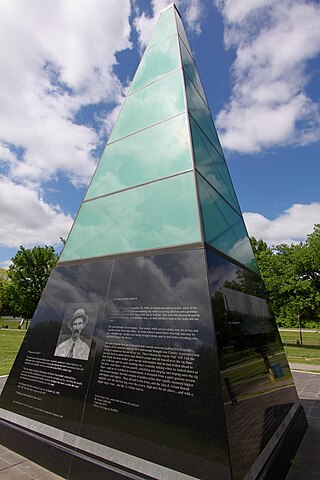
The discovery of the Glenn Pool Oil Reserve in 1905 brought the first major oil pipelines into Oklahoma, and instigated the first large scale oil boom in the state. Located near what was—at the time—the small town of Tulsa, Oklahoma, the resultant establishment of the oil fields in the area contributed greatly to the early growth and success of the city, as Tulsa became the petroleum and transportation center of the state, and the world.
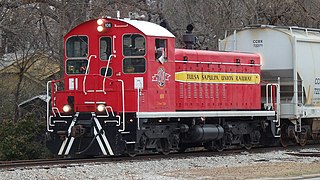
Tulsa-Sapulpa Union Railway Company, L.L.C. is a Class III shortline rail carrier which operates freight service between Tulsa, Oklahoma and Sapulpa, Oklahoma over 10 miles of track known as the Sapulpa Lead, and which also leases and operates a 12.9 mile section of Union Pacific track known as the Jenks Industrial Lead between Tulsa and Jenks, Oklahoma. The line connects with two Class I railroads, being the Union Pacific at Tulsa and the BNSF at Sapulpa, and additionally connects to its fellow Class III shortline, the Sand Springs Railway, in Tulsa. It is owned by the Collins Family Trust. Major customers on the Sapulpa Lead include Technotherm, Prescor, and Ardagh Glass, and on the Jenks Industrial Lead, the HF Sinclair oil refinery, Kentube, Word Industries, Pepsi Cola, and Kimberly-Clark.
The Route 66 Historical Village at 3770 Southwest Boulevard in Tulsa, Oklahoma, is an open-air museum along historic U.S. Route 66. The village includes a 194-foot-tall (59 m) oil derrick at the historic site of the first oil strike in Tulsa on June 25, 1901, which helped make Tulsa the "Oil Capital of the World". In a nod to Route 66, it has the Route 66 Village Station, a tourism information center modeled after a 1920s-1930s gas station, which includes a giant Route 66 map for travelers.















